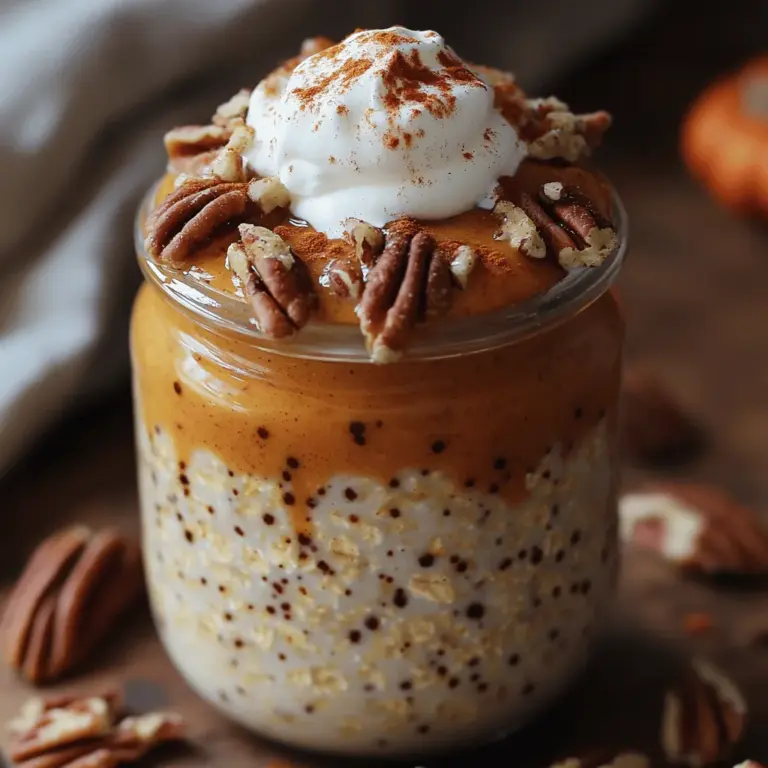Introduction
Chicken Alfredo is a beloved dish that embodies the essence of comfort food. With its rich, creamy sauce enveloping tender chicken and perfectly cooked pasta, it delivers a satisfying experience that warms the soul. This classic Italian-American dish has won over countless hearts and dinner tables, making it a staple in many households. While you can easily find Chicken Alfredo on restaurant menus, there’s something truly special about making it at home. Crafting this dish from scratch allows you to control the flavors and ingredients, ensuring an authentic taste that store-bought alternatives simply can’t replicate.
Homemade recipes not only provide a sense of accomplishment but also allow you to tailor them to suit your preferences. The creamy texture and rich flavors of Chicken Alfredo can be adjusted to create a dish that is uniquely yours. Whether you prefer a decadent indulgence or a lighter version, the beauty of cooking at home is the ability to experiment and perfect your dish. In this article, we will dive into the history and origins of Chicken Alfredo, explore the best ingredients to use, and provide a step-by-step guide to creating your very own creamy Chicken Alfredo pasta.
Understanding Chicken Alfredo
History and Origins of Alfredo Sauce
The origins of Alfredo sauce can be traced back to the early 20th century in Rome, Italy. The dish was created by Alfredo di Lelio, who prepared it for his wife during her pregnancy when she was unable to eat much. His combination of butter, cream, and Parmesan cheese over pasta was a hit, and the dish quickly gained popularity. When American soldiers returned from World War II, they brought this delightful recipe back to the United States, where it evolved into the Chicken Alfredo we know and love today.
As the dish made its way across the globe, various adaptations emerged, leading to a plethora of regional variations. While the original recipe focuses on fettuccine, modern interpretations often incorporate different types of pasta and additional ingredients, such as vegetables, seafood, or spices. Regardless of the variations, the essence of Chicken Alfredo remains a creamy, rich sauce that perfectly complements the pasta and chicken.
Key Ingredients that Define Chicken Alfredo
To achieve the ultimate Chicken Alfredo, several key ingredients play a crucial role in defining the dish:
– Pasta: The foundation of the dish. Traditional recipes often use fettuccine, but other types of pasta can work just as well.
– Chicken: Tender, juicy chicken is essential to the dish. Grilled or pan-seared chicken adds depth of flavor.
– Cream: Heavy cream is the cornerstone of the sauce, providing that signature creaminess. Alternatives like half-and-half can be used for a lighter version.
– Cheese: Freshly grated Parmesan cheese is key to achieving a rich, savory flavor that melds beautifully with the cream.
Variations of Chicken Alfredo Around the World
While Chicken Alfredo is often associated with Italian-American cuisine, variations of the dish can be found worldwide. In some regions, you might find Alfredo sauce paired with shrimp or lobster, while others might add sun-dried tomatoes, spinach, or mushrooms for an extra layer of flavor. In fact, some creative interpretations even incorporate different cheeses, such as Romano or Gouda, for a unique twist on the classic.
Selecting the Right Ingredients
To create the perfect Chicken Alfredo, selecting high-quality ingredients is paramount. Here’s a detailed look at the best choices to make while shopping for your ingredients.
Choosing the Best Pasta for Chicken Alfredo
The type of pasta you choose can significantly influence the overall texture and experience of your Chicken Alfredo. While fettuccine is the traditional choice, you can also consider:
– Penne: This tubular pasta holds onto the creamy sauce well, making each bite flavorful.
– Linguine: Slightly thinner than fettuccine, linguine offers a delightful chewiness that pairs nicely with the rich sauce.
When selecting your pasta, opt for high-quality, dry pasta for optimal results. Fresh pasta can be an excellent alternative, though it may require adjustments in cooking time.
The Importance of Fresh Chicken versus Frozen Chicken
When it comes to chicken, using fresh cuts is crucial for achieving the best flavor and texture in your Chicken Alfredo. Fresh chicken breasts are typically juicier and more tender than their frozen counterparts. If you need to use frozen chicken, ensure that it is fully thawed before cooking to maintain even cooking and flavor.
Tips for Selecting Quality Chicken
When shopping for chicken, look for:
– Color: Fresh chicken should have a pinkish hue with no signs of browning.
– Smell: Avoid chicken that has an off or sour smell.
– Texture: The meat should feel firm and moist, not slimy or dry.
Opting for organic or free-range chicken can also enhance the flavor and quality of your dish.
Cream Options: Heavy Cream versus Half-and-Half
The creamy sauce that defines Chicken Alfredo relies heavily on the type of cream you use. Heavy cream is the best choice for achieving that luscious, velvety texture that coats the pasta perfectly. However, if you’re looking for a lighter option, half-and-half can be used, although it may result in a thinner sauce. Keep in mind that the richness of heavy cream plays a significant role in balancing the flavors of the dish, so choose accordingly based on your dietary preferences.
Cheese Selection: Parmesan and Alternatives
Parmesan cheese is a critical ingredient in Chicken Alfredo, providing a unique depth of flavor that complements the cream beautifully. When selecting cheese, opt for freshly grated Parmesan rather than pre-packaged options. The flavor and texture of freshly grated cheese are far superior, ensuring your sauce is rich and delicious.
If you’re looking for alternatives, consider using Pecorino Romano for a sharper taste, or even a blend of different cheeses to create a complex flavor profile. Just keep in mind that the key to a successful sauce lies in the quality of the cheese you choose.
The Role of Cheese in Achieving the Perfect Sauce
Cheese not only adds flavor but also helps thicken the sauce, creating that characteristic creamy consistency. As the cheese melts into the warm sauce, it binds all the ingredients together, resulting in a cohesive and satisfying dish. To achieve the best results, add the cheese gradually while stirring, allowing it to melt completely before adding more.
Step-by-Step Guide to Making Homemade Chicken Alfredo
In this section, we will walk you through the essential steps to prepare your own homemade Chicken Alfredo, starting with the chicken.
Preparing the Chicken
1. Marinating and Seasoning Tips for Maximum Flavor: Start by marinating your chicken breasts in a mixture of olive oil, garlic, salt, and pepper for at least 30 minutes. This step not only infuses the chicken with flavor but also helps to keep it moist during cooking.
2. Cooking Methods: Grilling vs. Pan-Searing: You can cook your chicken using either grilling or pan-searing techniques. Grilling adds a nice smoky flavor and attractive grill marks, while pan-searing allows for a beautifully browned exterior. If you choose to grill, preheat your grill to medium-high and cook the chicken for about 6-7 minutes per side, or until it reaches an internal temperature of 165°F. For pan-searing, heat a tablespoon of olive oil in a skillet over medium heat and cook the chicken for about 5-6 minutes on each side.
Cooking the Pasta
1. Best Practices for Boiling Pasta to Achieve the Perfect Texture: To cook your pasta, bring a large pot of salted water to a rolling boil. The salt enhances the flavor of the pasta, so don’t skip this step. Add your chosen pasta and cook according to the package instructions, usually around 8-10 minutes for dried pasta. Stir occasionally to prevent sticking, and taste a piece a minute or two before the suggested cooking time to ensure it reaches al dente consistency.
2. Importance of Reserving Pasta Water for the Sauce: Before draining your pasta, be sure to reserve about a cup of the starchy pasta water. This water can be a game-changer when it comes to achieving the perfect Alfredo sauce. The starch helps to emulsify the sauce, creating a creamy texture that clings to the pasta beautifully.
By following these initial steps, you will set the stage for a delicious Chicken Alfredo that will impress your family and friends. In the following sections, we’ll dive deeper into the sauce preparation, how to combine the ingredients, and additional tips for making this dish a true standout. Stay tuned as we explore the final steps to crafting this comforting classic.
{{image_2}}
Making the Alfredo Sauce
Creating a rich and creamy Alfredo sauce is the heart of any Chicken Alfredo dish. This sauce, known for its velvety texture and indulgent flavor, can elevate your pasta experience. The following section outlines the ingredients needed and step-by-step instructions to ensure your sauce turns out perfectly.
Ingredients Needed for the Sauce
To make a delicious Alfredo sauce, you will need the following ingredients:
– 1 cup heavy cream: This is essential for achieving the creamy texture that Alfredo is known for.
– 1/2 cup unsalted butter: Adds richness and flavor.
– 1 cup grated Parmesan cheese: Freshly grated is preferable for better melting and flavor.
– 3 cloves garlic, minced: Enhances the sauce with a hint of aromatic flavor.
– Salt and pepper, to taste: Essential for seasoning.
– Pinch of nutmeg (optional): Adds warmth and depth to the flavor.
Step-by-Step Instructions for Creating a Creamy Sauce
1. Melt the Butter: In a medium saucepan over medium heat, melt the unsalted butter. Allow it to bubble gently, but do not let it brown.
2. Sauté the Garlic: Once the butter is melted, add the minced garlic. Sauté for about 1-2 minutes until fragrant, being careful not to burn it.
3. Add the Heavy Cream: Slowly pour in the heavy cream while stirring continuously. Let the mixture come to a gentle simmer. This will help incorporate the flavors.
4. Incorporate the Cheese: Gradually whisk in the grated Parmesan cheese. Stir continuously until the cheese is fully melted and the sauce is smooth. This process should take about 3-4 minutes.
5. Season the Sauce: Add salt and pepper to taste. If using, sprinkle in a pinch of nutmeg at this stage, which will enhance the sauce’s flavor profile.
6. Adjust Consistency: If the sauce seems too thick, you can thin it out with a little bit of reserved pasta water. Start with a tablespoon at a time until you reach the desired consistency.
7. Keep Warm: Once your sauce is ready, keep it on low heat while you prepare the pasta and chicken, stirring occasionally to prevent it from thickening too much.
Tips for Preventing the Sauce from Breaking
To avoid an Alfredo sauce that separates or “breaks,” consider the following tips:
– Control the Heat: Always cook on medium or low heat. High temperatures can cause the cream to curdle.
– Use Fresh Ingredients: Freshly grated Parmesan cheese melts better than pre-packaged versions, which often contain anti-clumping agents.
– Whisk Continuously: Stirring as you add ingredients helps to emulsify the sauce and keep it smooth.
– Avoid Boiling: Never let the sauce reach a rolling boil, as this can cause the oils to separate from the cream.
Combining Ingredients
Once your Alfredo sauce is ready, it’s time to combine it with your cooked pasta and chicken. Properly uniting these components is crucial for a balanced and flavorful dish.
How to Properly Combine Pasta, Chicken, and Sauce
1. Cook Your Pasta: Begin by cooking your pasta according to the package instructions until al dente. Reserve about 1 cup of pasta water before draining.
2. Combine with Sauce: In a large mixing bowl or directly in the pot used for cooking pasta, add the drained pasta and pour the Alfredo sauce over it.
3. Add the Chicken: If you have pre-cooked chicken (grilled, sautéed, or rotisserie), slice it into bite-sized pieces and add it to the pasta and sauce mixture.
4. Toss to Coat: Gently toss the pasta, chicken, and sauce together using tongs or a large spoon until everything is well coated. If the mixture appears too thick, gradually add reserved pasta water until you achieve the desired creaminess.
Serving Suggestions
Chicken Alfredo is a hearty dish that pairs wonderfully with various accompaniments. Here are some suggestions to enhance your meal.
Ideal Accompaniments for Chicken Alfredo
1. Garlic Bread: A classic side that complements the creamy sauce perfectly. Serve slices of warm, toasted garlic bread for dipping.
2. Salad: A light, fresh salad with mixed greens, cherry tomatoes, and a tangy vinaigrette can balance the richness of the Alfredo.
3. Vegetables: Roasted or steamed vegetables, such as asparagus or green beans, add color and nutrition to your plate.
Presentation Tips for an Appealing Dish
– Use a Large Serving Platter: Transfer the Chicken Alfredo to a large platter for a family-style presentation or serve in individual bowls for a more elegant display.
– Layer it Up: For a more visually appealing dish, layer the pasta and sauce, then top with chicken pieces.
Garnishing Options
– Chopped Parsley: Fresh parsley adds a pop of color and freshness. Sprinkle over the finished dish before serving.
– Extra Cheese: Offer additional grated Parmesan on the side for those who love an extra cheesy flavor.
– Freshly Cracked Pepper: A dash of freshly cracked black pepper enhances the dish’s visual appeal and adds a little spice.
Variations and Customizations
One of the best things about Chicken Alfredo is its versatility. Here are some popular variations and customizations you might consider.
Adding Vegetables for a Healthier Twist
Incorporating vegetables into your Chicken Alfredo not only enhances its nutritional profile but also adds flavor and texture. Here are some popular choices:
– Broccoli: Steamed broccoli florets add a vibrant color and a satisfying crunch.
– Spinach: Fresh spinach wilts beautifully into the sauce and adds a nutritional boost.
– Mushrooms: Sautéed mushrooms introduce an earthy flavor that complements the creamy sauce.
Incorporating Different Proteins
If you’re looking to mix things up, consider using different proteins in your Chicken Alfredo:
– Shrimp: Sautéed shrimp can add a seafood twist to the classic recipe.
– Salmon: Flaky, pan-seared salmon pairs well with the creamy sauce, creating a luxurious dish.
– Tofu: For a vegetarian option, grilled or sautéed tofu can provide the protein while keeping the dish meat-free.
Creating a Lighter Version of Chicken Alfredo
If you want to enjoy Chicken Alfredo without the extra calories, consider these lighter alternatives:
– Substitutes for Cream and Cheese: Use low-fat cream, Greek yogurt, or even cauliflower puree to create a creamy texture with fewer calories.
– Whole Wheat Pasta: Swap regular pasta for whole wheat or chickpea pasta to add fiber and nutrients.
Storing and Reheating Chicken Alfredo
If you find yourself with leftovers, it’s essential to store and reheat them properly to maintain the dish’s creamy consistency.
Best Practices for Storing Leftovers
1. Cool Down: Allow the Chicken Alfredo to cool to room temperature before transferring it to an airtight container.
2. Refrigerate: Store the leftovers in the refrigerator for up to 3 days. Avoid freezing, as cream-based sauces can separate when thawed.
How to Reheat Without Losing Creaminess
Reheating Chicken Alfredo can be tricky, but with the right method, you can keep it creamy:
– Stovetop Method: Place the Chicken Alfredo in a saucepan over low heat. Add a splash of milk or reserved pasta water to help loosen the sauce as it warms. Stir continuously until heated through.
– Microwave Method: Transfer the dish to a microwave-safe container and cover it loosely. Heat in 30-second intervals, stirring in between. Again, adding a little milk can help maintain the sauce’s texture.
Conclusion
Making Chicken Alfredo at home is a rewarding experience that allows you to enjoy a classic Italian dish tailored to your taste. The process of combining creamy Alfredo sauce with perfectly cooked pasta and succulent chicken results in a meal that is both comforting and satisfying. With the ability to customize ingredients, add vegetables, or switch up proteins, you can create a version that suits your preferences perfectly.
The joy of cooking is not only in the final result but also in the exploration of flavors and the satisfaction of a homemade meal. We encourage you to experiment with this recipe, adding your personal touch, and find joy in every bite. Whether you are entertaining guests or enjoying a cozy dinner at home, Chicken Alfredo is sure to impress.


